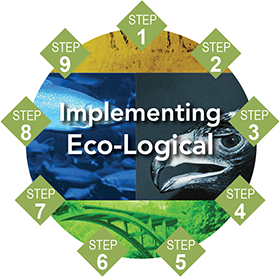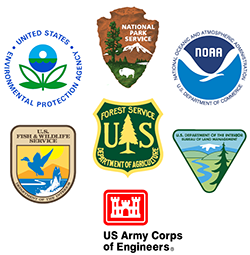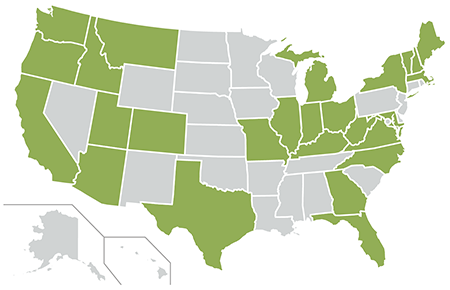Eco-Logical Grant Program Projects
Printer-friendly PDF →
A Pocket Guide
to the
Eco-Logical
Approach




What is Eco-Logical?
Do you want to accelerate project delivery, improve your partnerships with resource and regulatory agencies, reduce environmental permit processing times, and achieve better environmental outcomes? The Eco-Logical approach can help you accomplish all of these goals.
How does Eco-Logical work? Transportation agencies collaborate with partners and stakeholders during the planning process to understand transportation needs, identify and prioritize ecosystem and cultural resources, and discuss strategies to avoid or mitigate impacts in advance of project design. This early collaboration and documentation of priorities lead to agreed-upon mitigation strategies, timely permit decisions, and accelerated project delivery.
State Departments of Transportation (DOTs) and metropolitan planning organizations (MPOs) engaged in Eco-Logical report improved relationships with partners and co-developed tools and datasets that lead to mutually beneficial outcomes.
9 Steps

The Eco-Logical approach organizes current methods for natural resource identification, avoidance, minimization, and mitigation into a systematic, nine-step process.
Why Eco-Logical?
Transportation agency staff that have implemented Eco-Logical call out numerous benefits:
- Memorandums of agreement for data sharing and interagency coordination
- Programmatic agreements on advance mitigation
- Time savings through accelerated project delivery
- Improved water quality and wildlife movement from projects developed through Eco-Logical
“We used the Eco-Logical approach to restore confidence in the transportation planning process, while at the same time resolving issues that prevented productive dialog in the past.”
- Charlottesville-Albemarle Metropolitan Planning
Organization staff
“The level of stakeholder engagement and input has been enlightening and tremendous.”
– Missouri Department of Transportation staff
FHWA’s Role

FHWA supports State DOTs and MPOs that are interested in Eco-Logical through:
- Workshops, peer exchanges, and webinars
- Research
- Sharing of best practices
- Resource agency engagement, including:
Who is implementing Eco-Logical?
More than 35 transportation agencies are using the Eco-Logical approach to guide transportation plans or projects.

To learn more:

